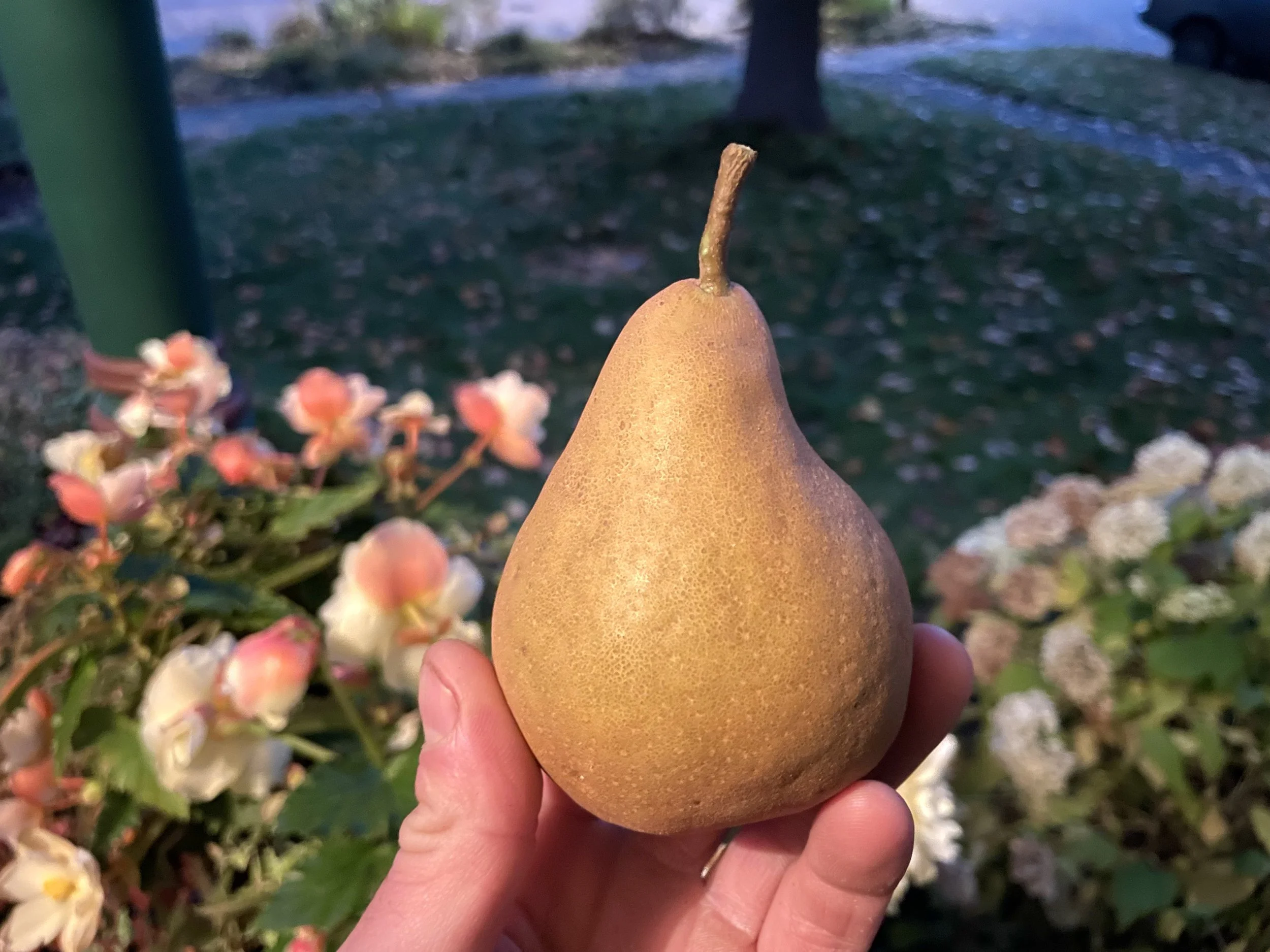Bosc Pear
Bosc Pear
Bosc or Buerré Bosc was first grown from seed in Belgium around 1807. Although some reports are conflicting as to who grew that first Bosc seedling, it was likely Jean-Baptiste van Mons, a Belgian, who bred it for its Calabasse (gourdlike) appearance in 1807. Van Mons produced more than 40 successful pear varieties and is the same breeder who introduced the Beurré d’Anjou in 1819. But don’t tell this to the French. The French contend that it’s one of their own, although this may be solely from the name change. In 1843, the pear was given the name Buerré Bosc to honor the French horticulturist and aristocrat, Louis Bosc (1759-1828), who was a French consul in New York during the French Revolution and who, after the war, gained international fame in his capacity as head of state gardens of France. But there’s no evidence that he bred Bosc. Maybe we’ll never know and it’s lost to history…but what we do know is that the Bosc has a regal appearance and superb, butteriness (afterall Beurré means buttery in French). Its butteriness makes for a great fresh eating pear that also bakes and dries well. It’s on par in terms of cold hardiness with all of our other European pears. They do well in Missoula and after seeing how they have done at a former nursery plot in Zone 4 Alberton, they should be just fine for zone 4. Must be pollenized by Flemish Beauty, Bosc, Hardy, Clapp’s/Karl’s, Comice, D’anjou, or Seckel.
These trees were potted from 3-4 ft. tall bareroot in 2023, grew another foot or so (4-5 ft. currently, and will be unpotted for shipping or pickup in Spring 2024. Grafted onto semi-dwarf OHxF87 rootstock.


